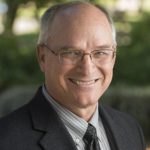Academic Administration
Academic Administration
What a catchy title and stimulating topic!
Now that I have been in this area of higher education for about eight years, it seems like it is time for me to explain what it is that we as academic administrators do. I actually came up with this a few years ago, when I was Dean of the College, and used it to explain how higher education works to parents and students. It has helped me put the wide variety of things we do into perspective, and seemed to help those who listened to grasp what we did. I believe that what I will outline actually helps explain both a Christian and secular university, the religious institution just adds a layer of complexity that others might not have, and some additional possibilities as well. Here is how it goes.
As a kind of shorthand I describe academic administration very simply as bringing together three central blocks or groups of the educational experience. We bring together for the success of all: the faculty with its gifts and responsibilities, students and their needs and desires, and the educational program with its multiple requirements and constituencies. Let me explain in a little more detail.
At the core of a university is a faculty. They are part of the university before any single group of students arrive and remain after it graduates and leaves. As a body they design and approve the educational requirements of the university, its programs or majors, and its entrance and graduation requirements. They are also active scholars. A contemporary university exists in the midst of rapidly changing bodies of knowledge. Our faculty contributes to the growth and application of that knowledge. The administration must work to encourage the work of the faculty particularly in encouraging and making available the possibility of excellent teaching, creative development and assessment of academic programs that meet requirements of various constituencies, and the unique scholarly contribution of the university’s faculty.
The students are the next group. The university exists to teach the various academic disciplines, and, more importantly I think, how students can become something of scholars themselves, life-long learners as we sometimes say, or professionals who can practice, develop and lead in their disciplines. Students come to the university with particular desires—to complete a degree, gain entrance into a profession, and for broader and deeper learning for leadership in society and church, the goals of the traditional liberal arts. Sometimes they do not understand their desires and needs in quite the same way that the faculty does. Sometimes they are in close harmony.
Finally the faculty (and other university professionals like those in student life and spiritual formation departments) and students work together in and through an educational program—general education, academic majors, elective courses, co-curricular experience in student life, international travel, spiritual formation, residence programs, service learning and ministries, athletics, and performing arts—to accomplish the goal of higher learning, graduation and entrance into professions, leadership and service. The academic program must meet professional standards, governmental standards (state and federal, increasingly so), and must achieve its particular mission, in our case as a Christ-centered university.
I think of these three blocks or groups as overlapping circles.

We want them to overlap as much as possible. We seek and work for the success of all three. When mission, goals, purposes and understanding, efforts, and requirements coincide we see the success of all three.

We try to keep them from looking like this…

This little diagram illustrates what we do. Whether we are developing a new program, planning new classroom or performance spaces, assessing the outcomes of programs, planning new majors, preparing an accreditation report, bringing a speaker to campus, working on a budget, evaluating our work as faculty, making time for scholarly work, developing and assessing the co-curricular program, developing library resources, making sure information technology is functioning, setting up international partnerships—whatever the particular thing that we might be working on at any one time, we are working to make it possible of students and faculty to come together around an academic effort that is creative and insightful, and leads to the success of each. That is my shorthand for academic administration.




